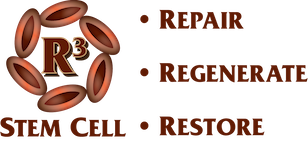FAQs about Interstitial Cystitis
Interstitial cystitis (IC) is a chronic inflammatory disorder of the bladder. Some of the symptoms of IC include urgency, frequency, and pain. Many patients with interstitial cystitis are plagued with symptoms for years before being diagnosed.
How common is interstitial cystitis?
In the United States, around 700,000 people are affected by interstitial cystitis. While it affects people of any race, age, or sex, it is most common among women ages 20-60. In fact, 90% of all diagnosed cases are in women. The onset of symptoms is most commonly around age 40, but 1/4th of patients with IC are 30 years or younger at the time of diagnosis.
What causes interstitial cystitis?
There is no known cause of IC, but experts have theories. One commonly accepted theory involves the cells lining the inside of the bladder. The lining of the bladder is protected from toxins by a layer of protein called glycoaminoglycan. With IC, this layer is broken down, and toxins irritate the bladder wall. Another theory is that IC develops due to an autoimmune response following a bladder infection.
What are the symptom of interstitial cystitis?
IC symptoms are similar to what is seen with a bladder infection. Women complain of lower abdominal pain, perineal pain, and supra-pubic discomfort. They often describe sensations like having a bladder infection, including dysuria, frequency, and urgency. For men, pain and inflammation of the prostate is present, as is painful ejaculation.
How is interstitial cystitis diagnosed?
Interstitial cystitis is diagnosed after other diagnoses are eliminated. The doctor will analyze the urine through analysis and cultures. Many patients with IC have small amounts of red blood cells present in the urine. Under anesthesia, a cystoscopy may be performed to evaluated the bladder lining. In patients with IC, inflammation and ulcerations may be noted. Around 95% of people with the condition also have glomerulations (tiny hemorrhages).
What is the treatment of interstitial cystitis?
Treatment options for IC include:
• Elmiron – Approved by the FDA in 1996, Elmiron is an oral medication that repairs the thin, damaged bladder lining. It takes up to 6 months to offer relief from symptoms.
• Other medications – Other medications used for IC include tricyclic antidepressants (amitriptyline), anti-inflammatory agents (ibuprofen, ketoprofen, and naproxen), antispasmotics (Baclofen and Flexiril), and antihistamines.
• Bladder distention – This involves stretching the bladder by filling it with a medicated solution. The procedure is done under general anesthesia, and medications used include DMSO and Rimso-50.
• Bladder training – This involves relaxation techniques and distractions to use to set a voiding schedule.
• Transcutaneous electrical nerve stimulation (TENS) – This involves mild electric pulses that are used to block pain signals. The unit is worn outside the body, and wires run from the unit to electrodes attached on the skin.
• Stem cell therapy – Mesenchymal stem cells (MSCs) have the ability to promote and assist in the repair of various organs and body structures, including the bladder mucosa and muscle. Patients with IC at R3 are treated by Board Certified physicians with amniotic stem cell therapy. The injections have the capability of repairing and restoring bladder urothelium and smooth muscle, along with decreasing inflammation and reducing pain.
For a complimentary evaluation at an R3 Stem Cell Center near you, call (844) GET-STEM today!
Resources
Qu T, Shi G, Ma K, Yang HN, Duan WM, Pappas GD: Targeted cell reprogramming produces analgesic chromaffin-like cells from human mesenchymal stem cells. Cell Transplant 2013; 22:2257-66.

